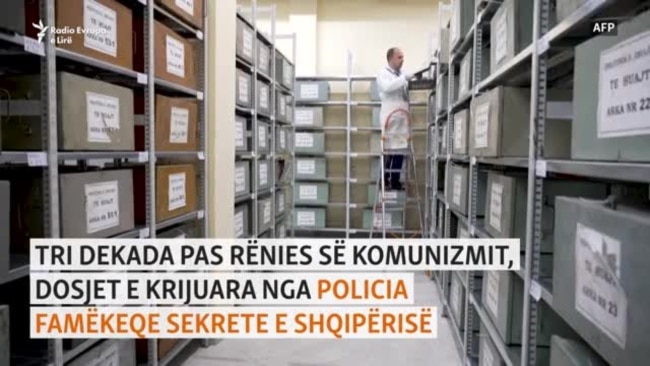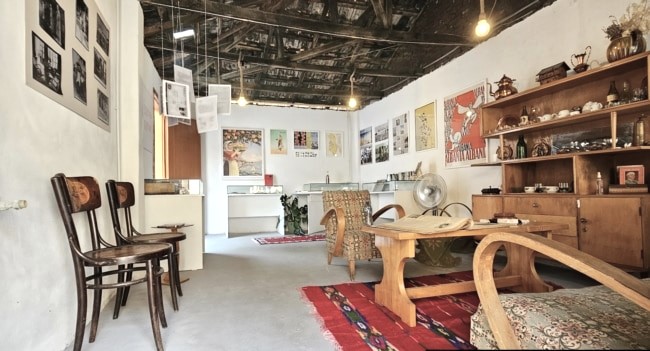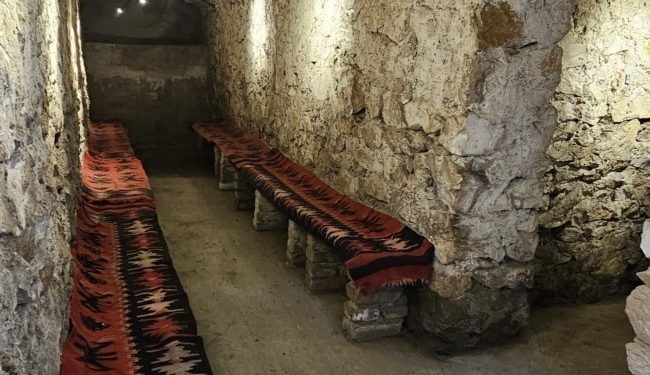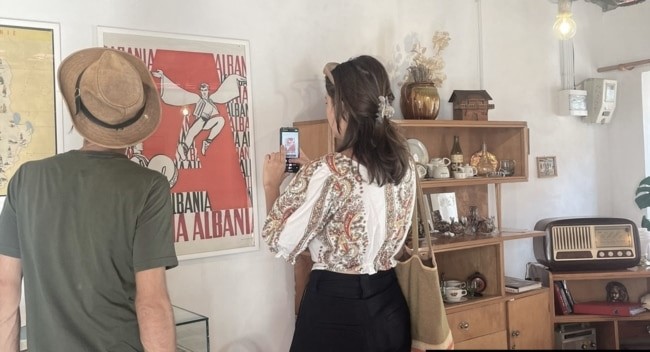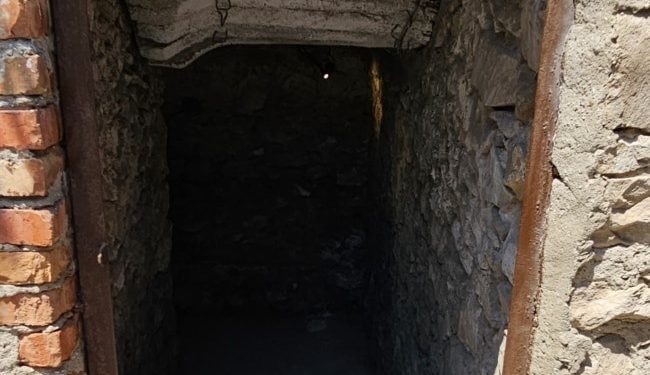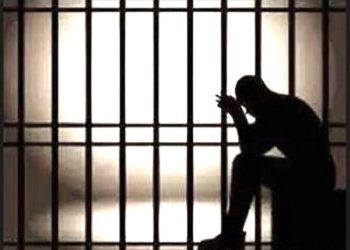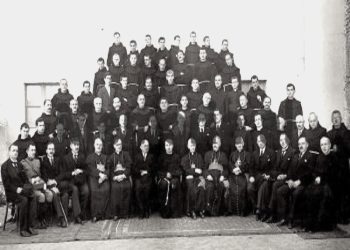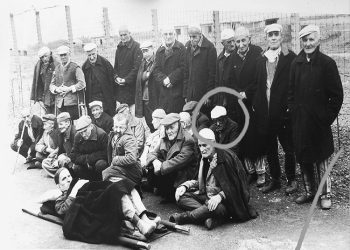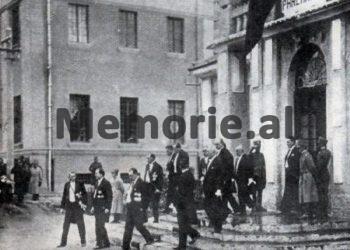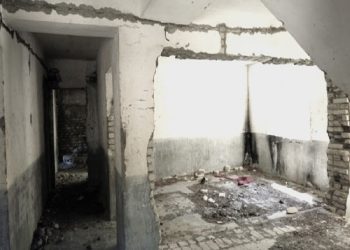By Jetmira Delia-Kaci
Memorie.al / With a passport in their pocket, every foreign tourist can visit Albania today, but during the communist regime, this was not enough. Tourists were met at the border crossings by barbers and tailors, who denied entry to those whose appearance the regime classified as “foreign displays” (or “foreign influences”). Long hair or inappropriate clothing was not permitted. Then the surveillance and eavesdropping began. With the tourist boom that Albania has been experiencing for several years, two educators and experts in this sector have opened an exhibition-museum, “The Eavesdropped Tourists,” so that Albanian citizens and foreign visitors can learn about tourism in communist Albania.
Holidays under Surveillance during Communism
Brunilda Liçaj, a lecturer in the Tourism department at the “Aleksandër Moisiu” University in Durrës, says that during her work, she found quite a bit of information on international tourism in different periods, but she was struck by the fact that there was very little information about domestic tourism during communism.
Among the hundreds of documents she managed to secure from the State Archive and the Authority for Information on Former State Security Documents, she realized that the wiretapping of foreign tourists is a story about which little or nothing is known.
For this reason, a few years ago she opened a special exhibition inside the “House of Leaves” museum in Tirana, which was the investigation center during the communist regime. She later organized it in several other cities across the country, but seeing the high interest in it, she and her colleague, Arjana Isaku, found the opportunity to bring it back in a different way. For them, it is important that the past is not forgotten and that Albanian citizens and foreign tourists know this part related to foreign visitors as well.
When did tourism in Albania begin?
Liçaj explains that tourism from foreigners began as early as 1956, the year when about 250 tourists visited Albania. “While in the 1990s, we reached 15,000 tourists. In the final years, there is evidence that it was used to attract foreign currency.”
“This was the reason why the number of buses of the state-owned enterprise ‘Albturist’ increased, and in a way, there was a kind of visa liberalization – they were issued more easily,” she emphasizes, recounting that years ago in Germany she met the director of the Berlin Technical Museum, who had been a guide in Albania for 20 years, accompanying German groups.
“He told me that there were groups of tourists who spent even the New Year’s Eve dinner at the ‘Adriatik’ Hotel in Durrës, where they consumed partridge or pheasant meat, and drinks like cognac, etc. We recall that at that time, citizens suffered for bread and food, which were distributed with coupons (the quantity of food was determined based on the number of family members), and they even queued early in the morning, risking being left without them,” Liçaj tells Radio Free Europe. She adds that this contrast prompted her to seek more information from Albanian institutions and exhibit some of the documents.
Barbers and Tailors Awaited Foreign Tourists
The two lecturers show that at the border crossings, during communism, foreign tourists were met by barbers and tailors. Beyond document control, they were subjected to strict checks on their appearance, so that ‘foreign displays’ would not enter Albania.
“Tourists were met by barbers and tailors. If the men had long hair, which was considered a ‘foreign display’ in the country, they had to go to the barber and get a haircut. If they wore ‘cowboy’ (denim) pants, they had to go to the tailor and have them narrowed. If the girls wore miniskirts, they were forced to wear trousers underneath them or buy clothes from the shops of that time,” says Arjana Isaku to Radio Free Europe.
But it didn’t end there. Among other things, tourists were obligated to be accompanied by Albanian staff during their holidays. They were forbidden from photographing or filming near specific areas defined in the regulations. Brunilda Liçaj says that tourist groups were informed beforehand about what was not allowed in Albania, but there were also those who broke the rules.
“There were cases where cameras were confiscated. There is the case of an Austrian who filmed where it was not allowed and filed an international lawsuit against the Albanian state. In another case, a Swede was not allowed to cross the border because he carried the Bible with him,” says Liçaj.
She mentions that there were quite a few instances where Albania refused tourist visa applications from the USA or Johannesburg because it was thought that individuals connected to the former King Zog might come, whose family lived there, and there were suspicions that they might try to seize power.
Kosovars under Surveillance, Famous People Also Visited Albania
Liçaj says that not everyone was wiretapped. Based on documents, among the 350 tourists who entered Albania in 1979, there were also Kosovars, 30 of whom were placed under surveillance. “Kosovars, who mainly came from Prizren and Pristina,” Liçaj explains, “were observed by the State Security to ensure they did not meet relatives who came from families that had members who had fled.”
“There are suspicions that well-known public figures, such as Ibrahim Rugova, Rexhep Qosja, or the family of Donika Gërvalla, were also observed. I have requested this information from the Dossier Authority, but I have not yet received a reply,” she says, noting that she contacted the writer Rexhep Qosja, but he refused to talk about the matter.
For a foreign tourist to come to Albania, they had to address a request to the “Albturist” agency, which could be refused if there were suspicions. But based on data from Albanian embassies in these countries, or from the Information Service, a good portion of the tourists were placed under surveillance. According to the findings, Isaku says, some employees of “Albturist” were employees or collaborators of the State Security and had the duty to observe foreign tourists.
“We have an audio recorder in the exhibition, where the eavesdropped conversations were stored. Small wiretaps, or ‘bugs’ as they were called, were placed in hotel rooms, in ashtrays, or cigarette holders,” she clarifies. Albania had long attracted famous people of the time to visit, such as the actor Bud Spencer, but also journalists.
“Around the 1980s, [Spencer] stayed at the ‘Adriatik’ hotel. Perhaps this was the reason why his films were shown so often during communism. But journalists and tourist guides also visited Albania; in fact, one of them produced one of the best guides for Albania, the first in the English language,” says interviewee Liçaj to RFE, emphasizing the fact that marketing was given importance at that time.
“The guides were made in seven world languages; there were strict controls on linguistic editing. The paper quality was very good. There were postcards, maps, the tourist’s book was drafted, etc.,” she says. “Many of them,” Liçaj states, “are no longer found because they have been bought on eBay by those who once visited Albania.”
Two Eras Intertwined in One House
The journey of the two women’s project on tourism during communism, Isaku and Liçaj, was suspended for a while. But their passion and desire to turn it into a tourist attraction prompted them to open this exhibition in the city of Durrës. “…We wanted to put the communist past at the service of tourism in Durrës as well.”
After researching the area, they found an old Durrës house where an elderly Mima couple lives. In its courtyard, there is also a bomb shelter, and they thought this was another element that would make the exhibition more interesting. Isaku explains that the house has a connection with several other attractions in the coastal city, such as the “Beauty of Durrës” mosaic from the 4th-3rd century BCE, the Roman baths, etc.
“The exhibition includes a room with objects from that period, which almost every Albanian had the same in their homes: chairs, sideboards, tables, glassware. Shelves with the works of Dictator Enver Hoxha. The coffee grinder… The milk bottle, with which our parents got up early to queue,” she recounts.
Speaking about the exhibition, Isaku says that the interest of foreign tourists to visit it is high, especially from Polish visitors: “They find similarities in the artistic works on the glass vessels, but also in the queue for food. However, they say that communism was harsher in Albania. Albanian visitors who come bring objects from that time after seeing that they receive their proper value here.”
The past – with the shelter, the typical Albanian room, and the exhibition about the eavesdropped foreign tourists – is intertwined with the present. Tourists are greeted with “Zana” candies, which were almost the only ones produced in the country under the communist regime. Arjana Isaku and Brunilda Liçaj have managed to find them with their original taste, from a workshop in Shkodër.
After learning about the communist regime, tourists can then taste Albanian products prepared by the Mima couple. They grow seasonal fruits and vegetables in their garden, and make gliko (fruit preserve) with which they welcome and send off foreign tourists, who are now no longer eavesdropped on.
The exhibition “The Eavesdropped Tourists,” which opened in July, will welcome visitors for four months. Arjana Isaku and Brunilda Liçaj wish to continue the journey of the exhibition in other cities, but they are awaiting financial support to make this happen. / Memorie.al




